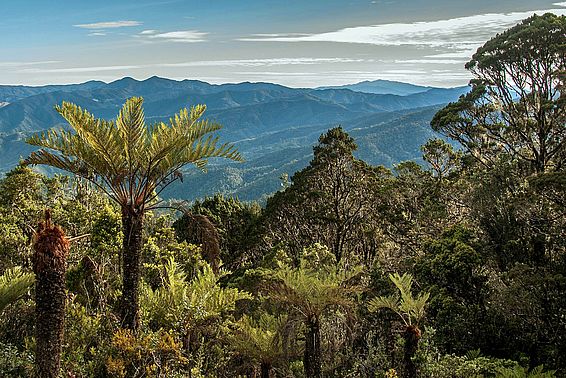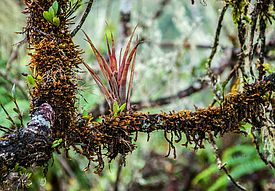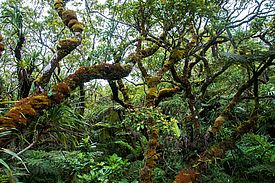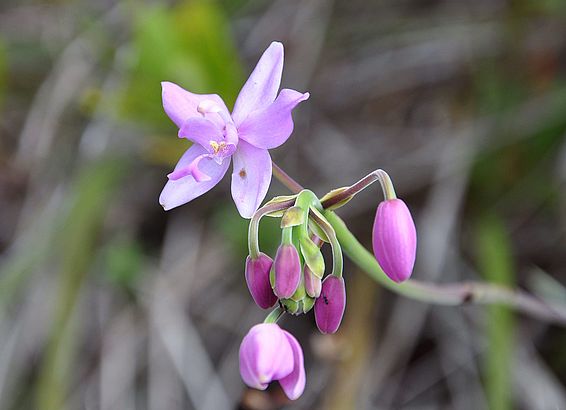19.11.2018 | News WSL
The first global vegetation database contains over 1.1 million vegetation records. This will make it easier to predict the consequences of climate and land use change in the future, as an international study involving researchers from the ZHAW, the WSL and the University of Zurich published in the journal "Nature Ecology & Evolution" shows.
To describe the global diversity of vegetation, only a few traits of each plant species need to be known. This is the conclusion of an international team of researchers led by the German Centre for Integrative Biodiversity Research (iDiv) in Halle-Jena-Leipzig, in which Swiss researchers of the ZHAW, the Swiss Federal Institute for Forest, Snow and Landscape Research WSL and the University of Zurich were also involved. In a new study published in the scientific journal “Nature Ecology & Evolution” they present the first global vegetation database including over 1.1 million complete vegetation records for all mainland ecosystems. The database is growing continuously and helps to better predict the consequences of global climate, land use change, or the impact of invasive species. In addition, for the first time, numerous questions of species diversity can be investigated globally.
Plants live in communities
Whether grasses, shrubs or trees - all plants have to cope with the same challenges: “On the one hand, they must photosynthesize efficiently in order to supply themselves with energy. On the other hand, they compete with neighbouring plants for water or nutrients from the soil,” explains vegetation ecologist Jürgen Dengler from ZHAW. Each species has developed very particular properties over time to react to environmental conditions. These include, for example, the size of a plant, the thickness of its leaves or the chemical components of a leaf. These so-called functional traits influence, for example, how much biomass plants produce or how much carbon dioxide they absorb from the air. So far, research has focused on the possible combinations of these functional traits at the level of individual plant species. “In reality, however, a plant species hardly ever occurs alone, because plants live in communities,” adds Dirk Karger of the Swiss Federal Research Institute WSL. With so-called vegetation surveys, defined sample areas of up to 1000 square metres in size are therefore used to list which plant species occur in which proportions.
Swiss contribution to database
While regional and national vegetation databases have increasingly emerged in recent years, a superordinate database has been lacking. This is why the research centre iDiv started the research initiative “sPlot” to develop and build the first global vegetation database. In extensive work, the existing data sets were standardized and merged. The ZHAW’s researcher Jürgen Dengler coordinated this work in the first three years of the project. Dirk Karger of the research institute WSL contributed the global climate model “CHELSA,” which is central to the evaluation of the database. The vegetation database "sPlot" currently contains more than 1.1 million vegetation records from all continents, which have been collected by hundreds of researchers from all over the world in the past decades. For instance, Michael Kessler from the University of Zurich contributed two vegetation databases from tropical rainforest areas that have hardly been investigated.
Temperature and precipitation not decisive
The research group combined the extensive data set of the "sPlot" vegetation database with the "TRY" database, the world's largest database for plant characteristics. "This will make it possible to investigate ecological issues for which the data basis was previously lacking," says the ZHAW researcher. For example, the research team wanted to know whether global factors influence the functional characteristics of plant communities. It turned out that temperature and precipitation have a relatively small influence, contrary to current opinion. Instead, the researchers found a close relationship between climate variables and phosphorus supply in the leaf. The longer the vegetation period, the lower the phosphorus content in the leaf - which also influences the leaf thickness. Land use by humans or interactions between plants - such as competition for nutrients, water and light - also have a much greater influence than assumed. This means that future calculations of plant production in a region cannot be carried out on the basis of simple temperature-precipitation models alone.
ZHAW starts initiative ¶
The basis for this study was laid by geobotanists who collected and published so-called vegetation surveys over more than a century. This method was developed by the Swiss geobotanist Josias Braun-Blanquet, so there are many historical data from Switzerland. "Unfortunately, training at Swiss universities in vegetation ecology data collection has been greatly reduced in recent decades," says Dengler. The ZHAW has therefore launched an initiative to digitise Switzerland's vegetation-ecological data records and to compile them in a national database. This will enable detailed studies to be carried out on changes in biodiversity in the Swiss vegetation and their causes in the future.
Links, documents and contacts ¶
Information regarding this publication
- Originalpublikation: Bruelheide, H., Dengler, J. et al. Global trait-environment relationships of plant communities. Nature Ecology & Evolution (2018). doi:10.1038/s41559-018-0699-8
- Vegetation database „sPlot“
- CHELSA - Free climate data at high resolution
Contacts
- Prof. Dr. Jürgen Dengler, Head Research Group Vegetation ecology, Institute of Natural Resource Sciences, ZHAW, Tel. +41 58 93450 84, E-Mail juergen.dengler(at)zhaw.ch
- Dr. Dirk Karger, Swiss Federal Institute WSL, Tel. +41 44 739 25 48, E-Mail dirk.karger(at)wsl.ch
- Dr. Michael Kessler, Scientific Curator Botanical Gardens, University of Zurich, Tel. +41 44 634 84 32, E-Mail michael.kessler(at)systbot.uzh.ch
Copyright ¶
WSL and SLF provide image and sound material free of charge for use in the context of press contributions in connection with this media release. The transfer of this material to image, sound and/or video databases and the sale of the material by third parties are not permitted.




